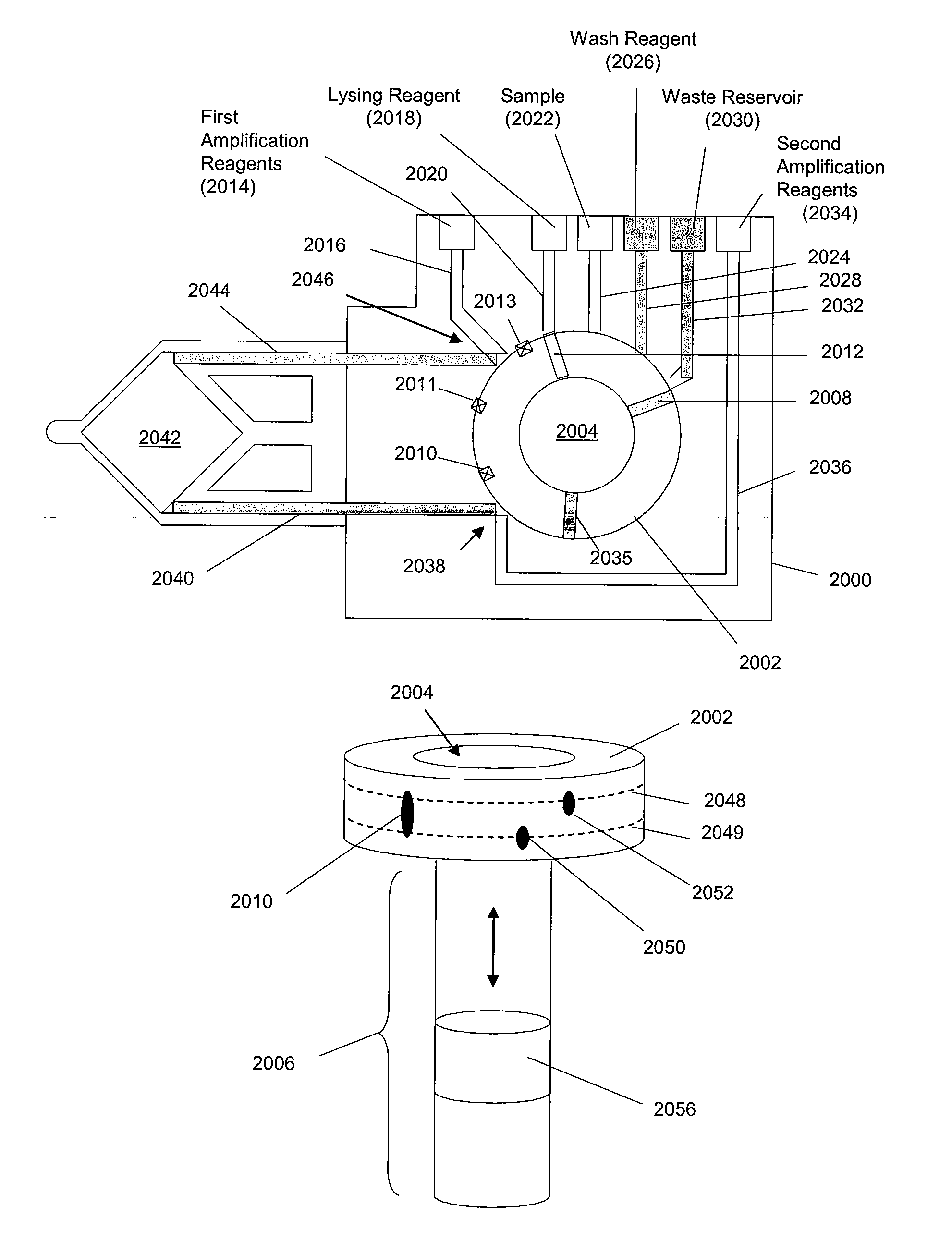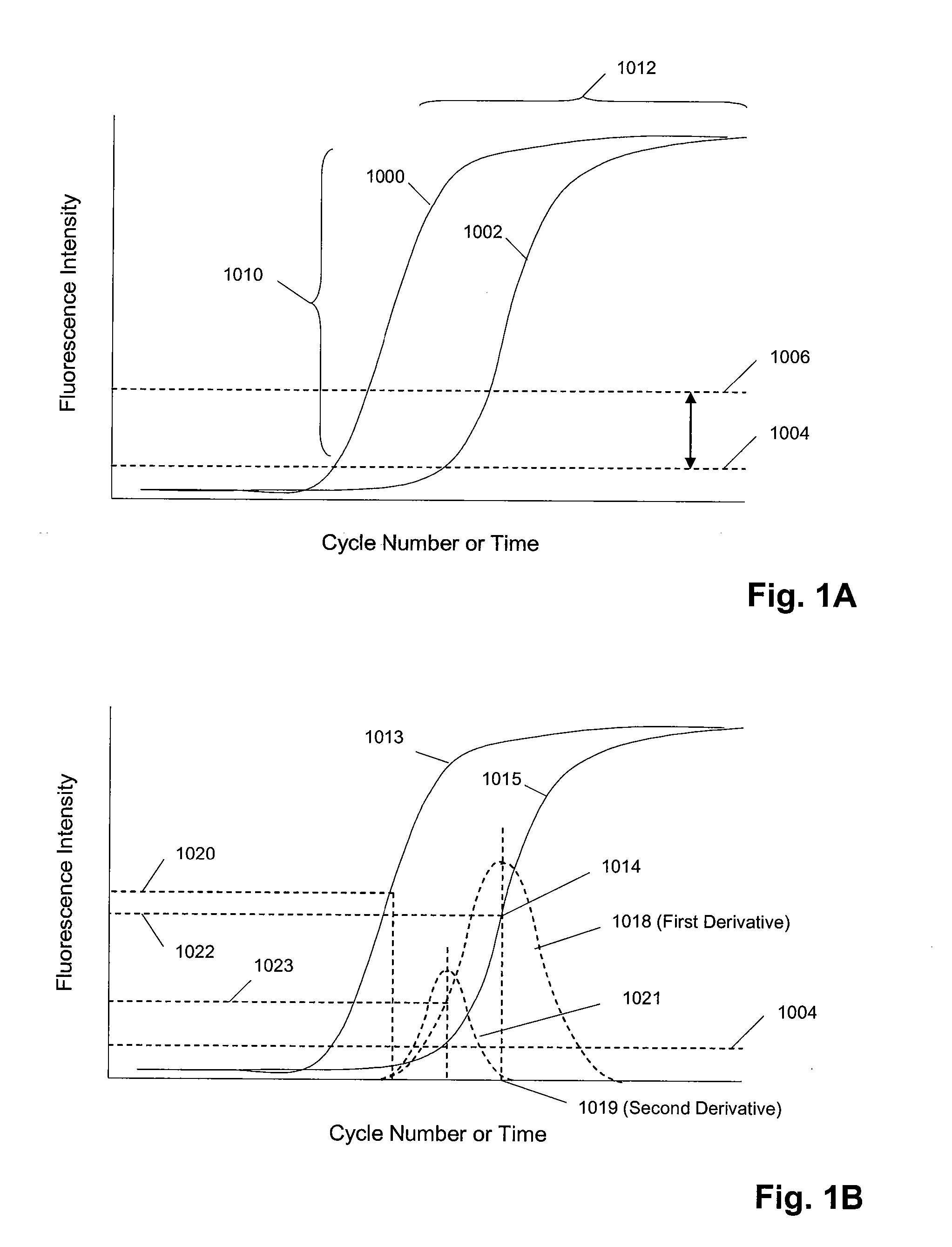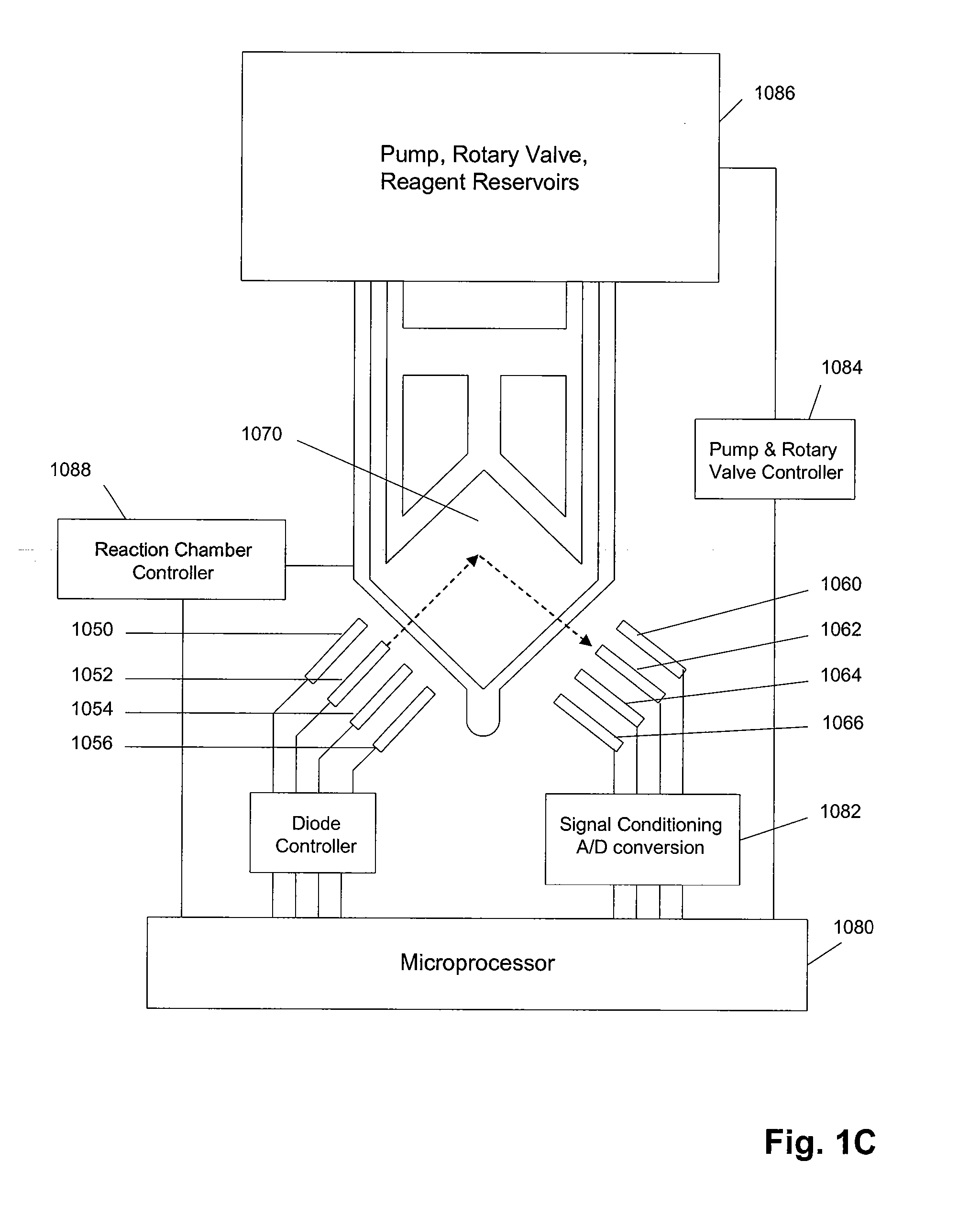Methods and apparatus for sequential amplification reactions
- Summary
- Abstract
- Description
- Claims
- Application Information
AI Technical Summary
Benefits of technology
Problems solved by technology
Method used
Image
Examples
example 1
Successive Amplification Reactions in the Same Reaction Chamber for Detection of Methicillin-Resistant Staphylococcus aureus (MRSA)
[0093] In this example, two tests using a standard PCR assay for MRSA (e.g. see, Warren et al. J. Clinical Microbiology, 42:5578-5581 (2004), which is incorporated herein by reference) were carried out. Both tests were performed in a Cepheid GENEXPERT™ amplification system (disclosed in various U.S. patents, including U.S. Pat. Nos. 6,713,297; 6,403,037; 6,374,684; 6,369,893, which are incorporated herein by reference). In the first test, a series of two PCR cycles were carried out in the same reaction chamber with a rinsing step in between. In the first cycle, all the reagents were present for a PCR that generated a predictable signal and in the second cycle only buffer was loaded into the reaction chamber. In the second test, the same procedure was carried out as in the first test, except that in the second cycle all the reagents were present, as in t...
example 2
Detection of MRSA by Two Amplification Reactions Conducted Successively in the Same Reaction Chamber Non-Lyophilized Reagents
[0095] In this example, two tests were carried out in which two PCRs amplifying different target sequences were run in series in the same reaction chamber. The only parameter changed in the two tests was the order in which the reactions were run. Two replicates of each test were run. As in Example 1, here MRSA target sequences were used. For this example, two reaction mixtures were prepared: a first reaction mixture (MM1) containing the MRSA genes, mecA (labeled with an Alexa 647 probe (A647)) and SPA (labeled with a tetramethylrhodamine probe (TxR)) and the internal control BG (labeled with an Alexa 532 probe (A532)); and second reaction mixture (MM2) containing the MRSA gene, orfH, (labeled with a fluorescein probe (FAM)) and the internal control BG (in this case labeled with a tetramethylrhodamine probe (TxR)). Further details of the first and second react...
example 3
Detection of MRSA by Two Amplification Reactions Conducted Successively in the Same Reaction Chamber Lyophilized Reagents
[0098] In this example, the substantially the same tests were carried out as in Example 2, except that lyophilized reagents were used for both PCRs in each sequence of reaction and the concentrations of MRSA DNA and BG DNA were 10-fold lower. In parallel with these tests, the affects of including or leaving out a HOTMASTER™ polymerase inhibitor (Eppendorf AG, Hamburg, Germany) was also tested. (The HOTMASTER™ inhibitor inhibits polymerase binding in a temperature depending manner so that extensions are prevented at low temperatures). Results of replicate experiments for the internal control sequence, BG, are shown in FIGS. 5A (reaction 1) and 5B (reaction 2). Both reactions produce clearly detectable signals with the relative amplification of BG greatly improved with the use of lyophilized reagents.
PUM
| Property | Measurement | Unit |
|---|---|---|
| Temperature | aaaaa | aaaaa |
| Temperature | aaaaa | aaaaa |
| Volume | aaaaa | aaaaa |
Abstract
Description
Claims
Application Information
 Login to View More
Login to View More - R&D
- Intellectual Property
- Life Sciences
- Materials
- Tech Scout
- Unparalleled Data Quality
- Higher Quality Content
- 60% Fewer Hallucinations
Browse by: Latest US Patents, China's latest patents, Technical Efficacy Thesaurus, Application Domain, Technology Topic, Popular Technical Reports.
© 2025 PatSnap. All rights reserved.Legal|Privacy policy|Modern Slavery Act Transparency Statement|Sitemap|About US| Contact US: help@patsnap.com



